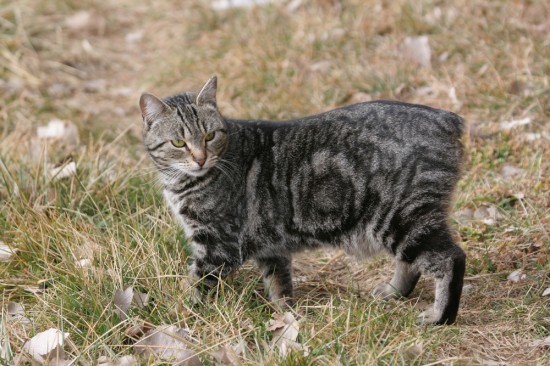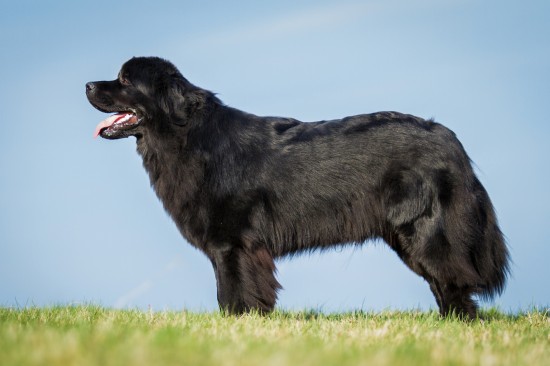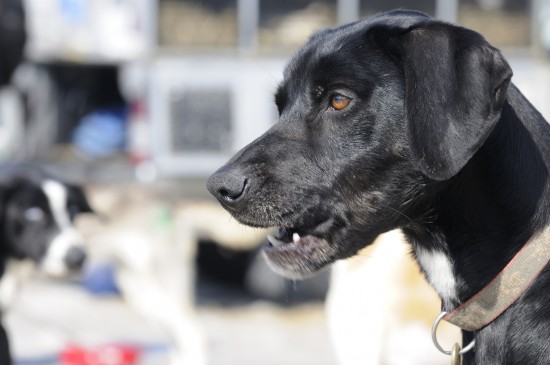

The Manx cat originated, as you might expect, on the Isle of Man, and at first glance may appear to be a cat like any other. But this native island breed has one particular distinction that sets them apart from the vast majority of other cat breeds and types in the world: they have no tails, or only a very short, stubby tail a couple of inches long. They are also distinctive due to their rather long hind legs, rounded heads, and the superior hunting skills that made them popular and in demand for many years as farm cats and ship’s cats. Manx cats have been known of in the wider world since at least the early 1800’s, and are now bred all over the world as well as on the Isle of Man.
So, how come Manx cats don’t have tails, and are there any health concerns associated with this unusual breed trait? Read on to find out more!
The cause of the Max cat’s lack of tail is a spontaneous genetic mutation that occurred at some stage in the distant past of the history of the breed. The gene for the tailless appearance of the breed is considered to be a dominant gene, meaning that it will often override the gene for normal tail development if a cat carrying the gene for tailless-ness mates, resulting in many of the resulting kittens also being born without a tail. The fact that the gene for tailless-ness spread so widely and is present in all of the cats of the breed and most of the cats that originated on the island is also partially due to the limited gene pool of cats that are available within a closed environment such as an island. So in time, the tailless-ness became a standard trait of the breed itself.
While a total lack of a tail is the most commonly recognisable signature trait of the breed, various other varieties of partial tails are also present within the Manx cat demographic as a whole. These different tail versions and their names are described below:
The gene that causes Manx cats to be born without a tail (or with an unusual tail variant as described above) is a dominant gene, which means that if two tailless Manx cats reproduce, the resulting kittens would also be born without a tail. Cats can only carry one copy of the gene; carrying two copies of the gene is unviable for life, and results in spontaneous miscarriage of the kittens in question. For this reason, breeders will very rarely attempt to breed two tailless Manx cats, and will instead usually breed a Manx cat with some form of tail with a tailless cat in order to pass on the tailless variation safely and in a way that is viable for life. Litters produced from a mating of this type will produce a litter with all varieties of Manx tail possible; not all of the kittens that result from mating will be totally tailless.
Sometimes, partial tail development in the Manx cat can lead to a painful form of arthritis of the tail and back, and Manx cats that are born with tails in the “stumpy” to “taily” length are sometimes docked (their tails are removed). This is to prevent the kinked and sometimes painful tails that come about due to abnormal tail growth at the developmental stage.
A condition known as “Manx syndrome” can occur if the gene that leads to tailless-ness also affects the spine by over-shortening it, and can lead to damage to the nerves of the spinal cord, and a form of feline spina bifida. This condition can also cause problems with the digestive system and bowels, and cause bladder problems including the bladder’s development to be stunted and smaller than normal. This condition usually leads to a dramatically shortened lifespan within affected cats, usually proving fatal at just three to four years old. The condition most commonly affects “rumpy” Manx cats, with around 30% of cats of the Manx breed estimated to suffer from this condition, the vast majority of them being “rumpy.”
Recent breeding programmes among Manx cat enthusiasts have gone a long way towards breeding this problem out of the gene pool, by ensuring that “rumpy” Manx cats are bred with “stumpy” ones, which has led towards decline in the number of cats with Manx syndrome being born year on year.
 Understanding Why Your Dog Is Growling
Understanding Why
Understanding Why Your Dog Is Growling
Understanding Why
 Spices And Other Cupboard Supplements For Dogs
Spices And Other
Spices And Other Cupboard Supplements For Dogs
Spices And Other
 Parenting your Pup
Parenting your Pup
As your puppy grows up, eve
Parenting your Pup
Parenting your Pup
As your puppy grows up, eve
 Get Chicken Runs to keep your chickens clean and away from predators
Get Chicken Runs to keep your chickens clean and away from
Get Chicken Runs to keep your chickens clean and away from predators
Get Chicken Runs to keep your chickens clean and away from
 Why Might A Dog Become Aggressive With Its Owner?
Why Might A Dog B
Why Might A Dog Become Aggressive With Its Owner?
Why Might A Dog B
Copyright © 2005-2016 Pet Information All Rights Reserved
Contact us: www162date@outlook.com